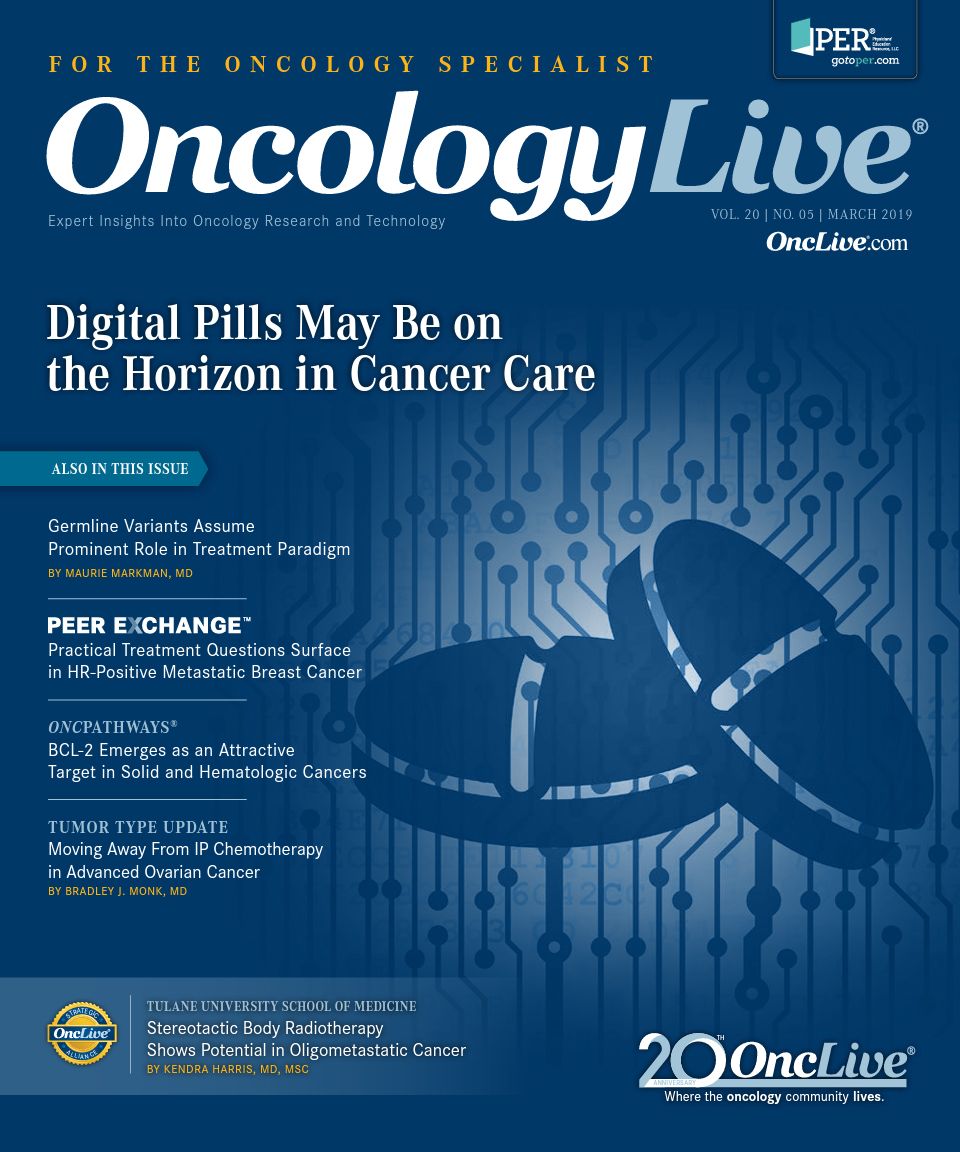Publication
Article
Oncology Live®
The Debate Over Early Screening for Pancreatic Cancer Continues
Author(s):
Higher costs associated with advanced stage pancreatic cancer, are potentially avoidable with screening and earlier treatment. However, the US Preventive Services Task Force in an ongoing draft review has reaffirmed its stance against screening in asymptomatic individuals.
Higher costs associated with advanced stage pancreatic cancer, are potentially avoidable with screening and earlier treatment. A number of studies have addressed this; however, the US Preventive Services Task Force (USPSTF) in an ongoing draft review has reaffirmed its stance against screening in asymptomatic individuals.
Table. Costs of Pancreatic Cancer Screening Per Year of Life Added (2015 Values)6
In a recently published investigation, Corral et al performed a meta-analysis of 19 prospective cohort studies of 7085 asymptomatic adults determined to be at high risk of pancreatic cancer (lifetime risk >5%, including genetic-associated conditions) who were screened with endoscopic ultrasound (EUS) and magnetic resonance imaging (MRI) to detect pancreatic lesions.1 The diagnostic yield for highrisk pancreatic lesions regardless of the form of screening was found to be 0.74 (95% CI, 0.33-1.14). The number of patients who had to be screened to identify 1 patient with a high-risk lesion was 135. The study also found that between 253 and 281 patients would need to be screened to prevent 1 death from pancreatic cancer. That estimate was lower than for hemoccult in stool (n = 880) or mammography (n = 1887) in the general population but similar to low-dose computed tomography for lung cancer in smokers (n = 320) and higher than colonoscopy in high-risk individuals (n <40). The authors concluded that further studies are needed to determine whether screening lowers mortality and is cost-effective for patients at high risk for pancreatic cancer. A study by Ghatnekar et al noted the high percentage of inoperable patients with late-stage PC (80%-85%) in discussing the desirability of earlier diagnosis. The group developed a framework for modeling cost and health effects from early detection of pancreatic cancer that allowed them to analyze its cost-effectiveness. They estimated costs and quality- adjusted life-years (QALYs) arising from screening for pancreatic cancer and compared those metrics with results of a wait-and-see approach. Patients at high risk for ductal pancreatic cancer were screened with an affinity proteomic test based on a serum biomarker signature. Investigators found that the incremental cost per QALY gained was $17,543 in 2013 US dollars ($18,919 in current US dollars), which the authors explained was cost-effective in Europe, where the 6-year-old study was done.2
A further study of EUS screening of individuals predisposed to PC by family history found an incremental cost-effectiveness ratio of $16,885 (2003 US dollars; $23,055, inflation adjusted for 2019 value) per life-year saved.3 The authors concluded that screening of carefully selected individuals with family histories of pancreatic cancer appeared to increase patient life expectancy in a cost-effective manner. They recommended that screening be done in centers that have experience with EUS screening for pancreatic dysplasia.
In a guideline dating back to 2004, the USPSTF currently recommends against routine screening for PC in asymptomatic adults, citing the potential for harm due to the low prevalence of pancreatic cancer and limited accuracy of available screening tests, as well as the invasive nature of diagnostic tests and the poor outcomes of treatment.4 The USPSTF reviewed that recommendation recently, but found no additional evidence that earlier screening outweighed the potential harms in asymptomatic adults and reaffirmed its earlier stance. Public comment on the draft finding will be accepted until March 4, 2019.5
Bruenderman et al argued in a 2015 cost-analysis report that for individuals at risk, screening with MRI/magnetic resonance cholangiopancreatography is affordable. For example, the costs per year of life added based on Medicare and national costs are $639 and $2542, respectively, for individuals with Peutz-Jeghers syndrome, which carries an increased- risk multiple of 132 times normal (Table).6
References
- Corral JE, Mareth KF, Riegert-Johnson DL, Das A, Wallace MB. Diagnostic yield from screening asymptomatic individuals at high risk for pancreatic cancer: a meta-analysis of cohort studies. Clin Gastroenterol Hepatol. 2019;17(1):41-53. doi: 10.1016/j.cgh.2018.04.065.
- Ghatnekar O, Andersson R, Svensson M, et al. Modelling the benefits of early diagnosis of pancreatic cancer using a biomarker signature. Int J Cancer. 2013;133(10):2392-2397. doi: 10.1002/ijc.28256.
- Rulyak SJ, Kimmey MB, Veenstra DL, Brentnall TA. Cost-effectiveness of pancreatic cancer screening in familial pancreatic cancer kindreds. Gastrointest Endosc. 2003;57(1):23-29. doi: 10.1067/mge.2003.28.
- Pancreatic cancer: screening. US Preventive Services Task Force website. uspreventiveservicestaskforce.org/Page/Document/UpdateSummaryFinal/pancreatic-cancer-screening. Published February 2004. Accessed February 12, 2019.
- Final research plan for pancreatic cancer: screening. US Preventive Services Task Force website. uspreventiveservicestaskforce.org/Page/Document/final-research-plan/pancreatic-cancer-screening1. Updated August 2017. Accessed February 12, 2019.
- Bruenderman E, Martin RCG II. A cost analysis of a pancreatic cancer screening protocol in high-risk populations. Am J Surg. 2015;210(3):409-416. doi: 10.1016/j.amjsurg.2014.11.017.




























%20(2)%201-Recovered-Recovered-Recovered-Recovered-Recovered-Recovered-Recovered-Recovered-Recovered-Recovered-Recovered-Recovered-Recovered-Recovered-Recovered-Recovered-Recovered.jpg?fit=crop&auto=format)
%20(2)%201-Recovered-Recovered-Recovered-Recovered-Recovered-Recovered-Recovered-Recovered-Recovered-Recovered-Recovered-Recovered-Recovered-Recovered-Recovered-Recovered-Recovered.jpg?fit=crop&auto=format)
